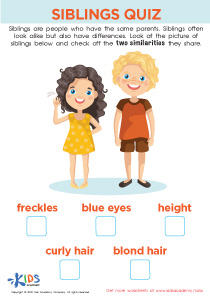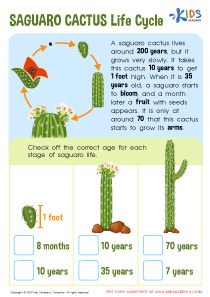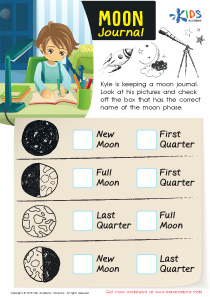Normal Weather Worksheets for Ages 7-9
6 filtered results
-
From - To
Discover our engaging "Normal Weather Worksheets for Ages 7-9," perfect for young learners keen to understand the world around them. Tailored to fit science curriculums, these interactive worksheets cover various weather phenomena, including temperature, precipitation, and seasonal changes. Designed to boost critical thinking and observational skills, each colorful worksheet blends fun illustrations with educational content. Ideal for use at home or in the classroom, our expertly crafted materials ensure kids stay intrigued while mastering key weather concepts. Visit the provided link to explore our collection and make learning about weather an exciting adventure for your child!
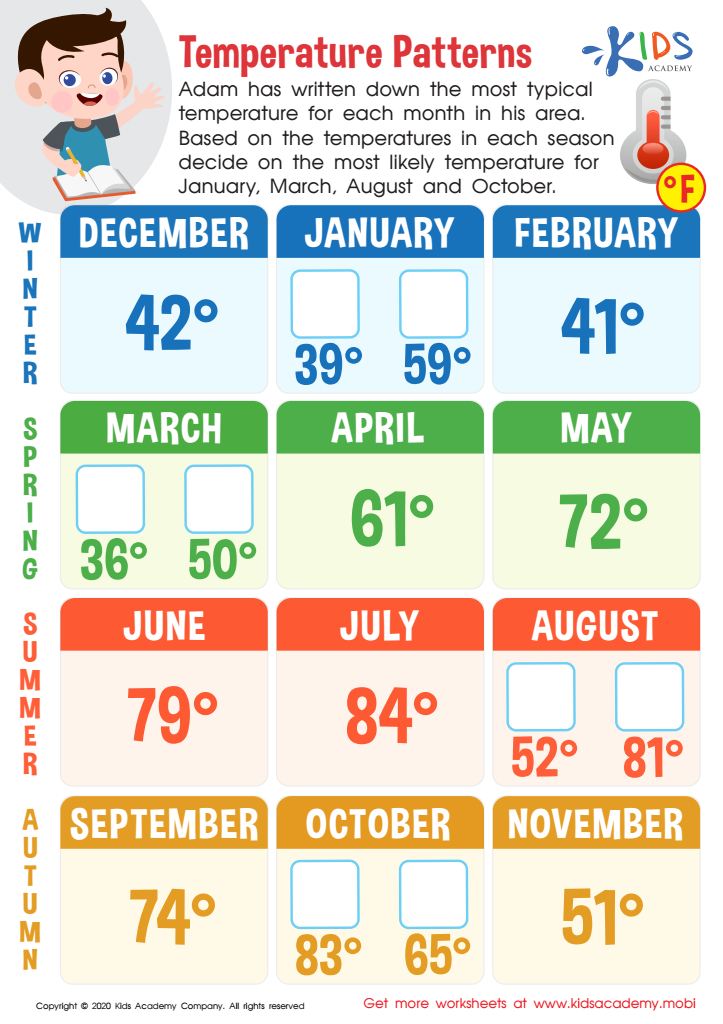

Temperature Patterns Worksheet
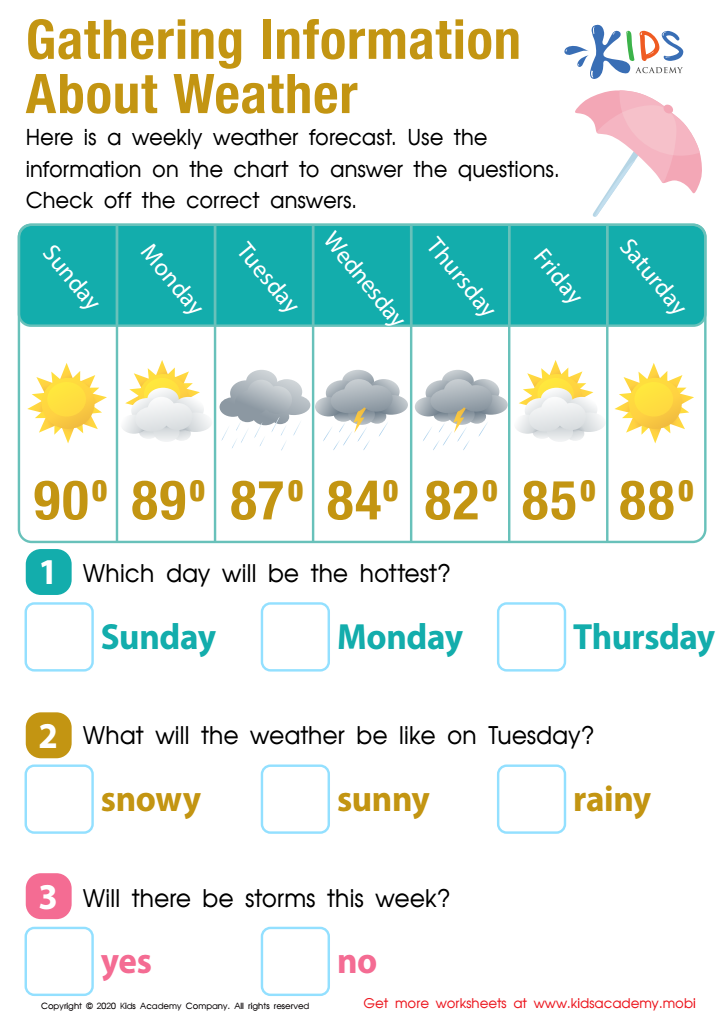

Gathering Information About the Weather Worksheet
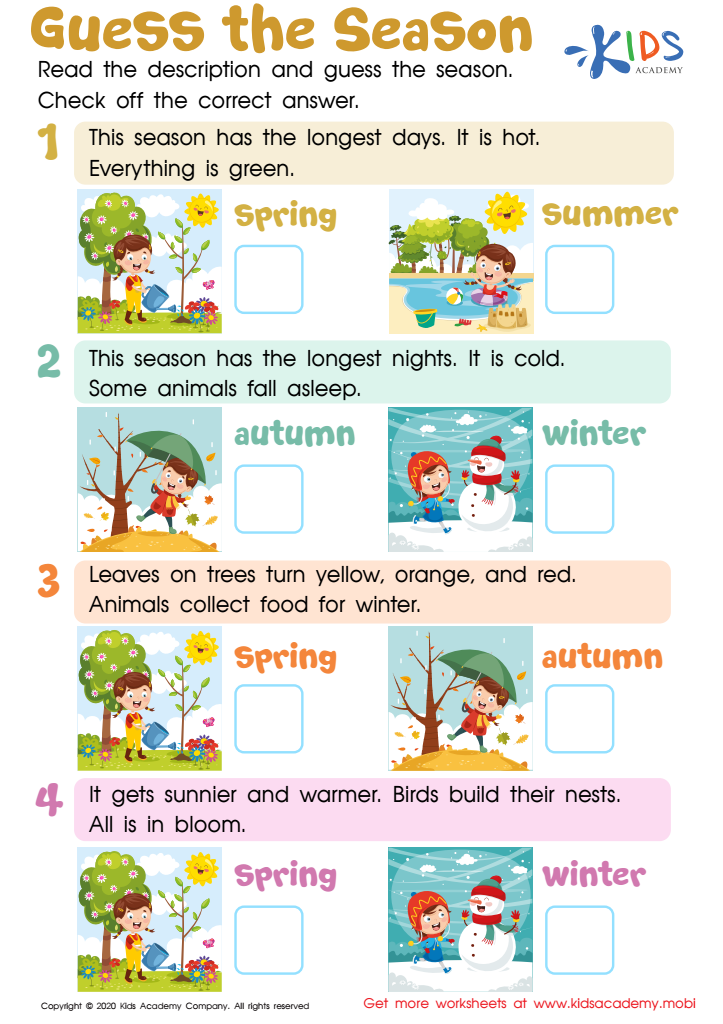

Guess the Season Worksheet
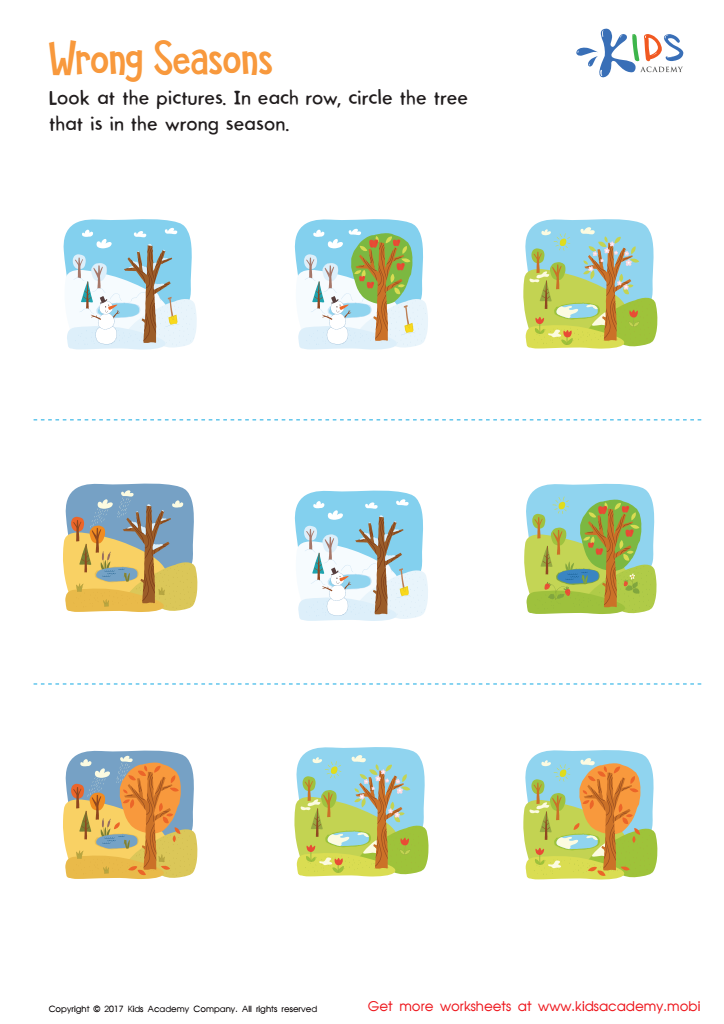

Wrong Seasons Worksheet
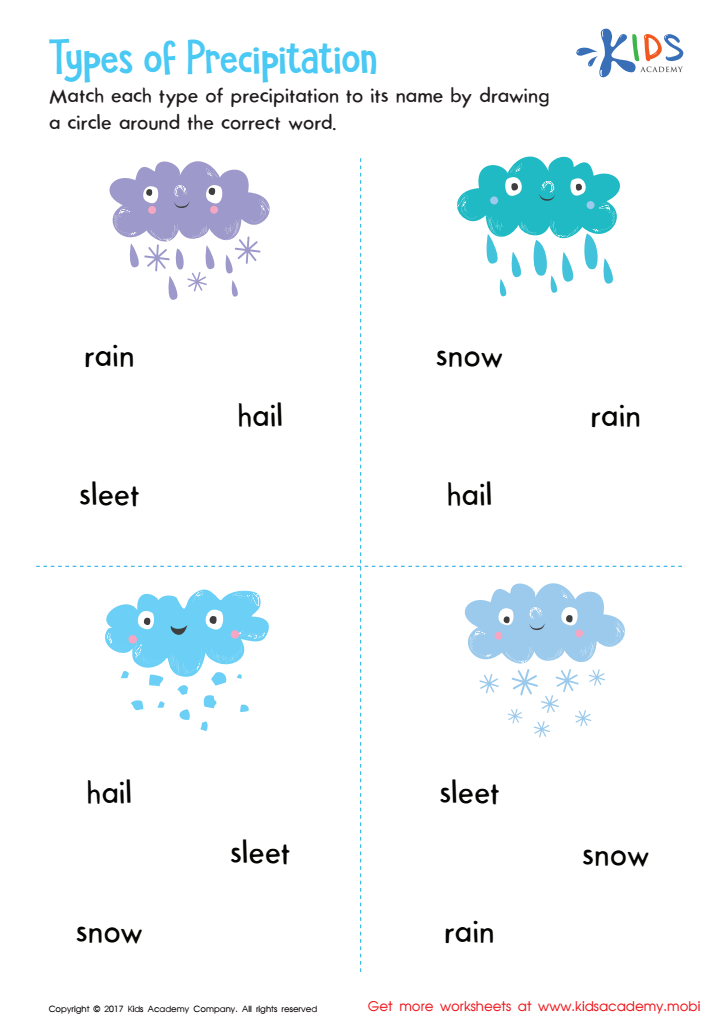

Types of Precipitation Printable
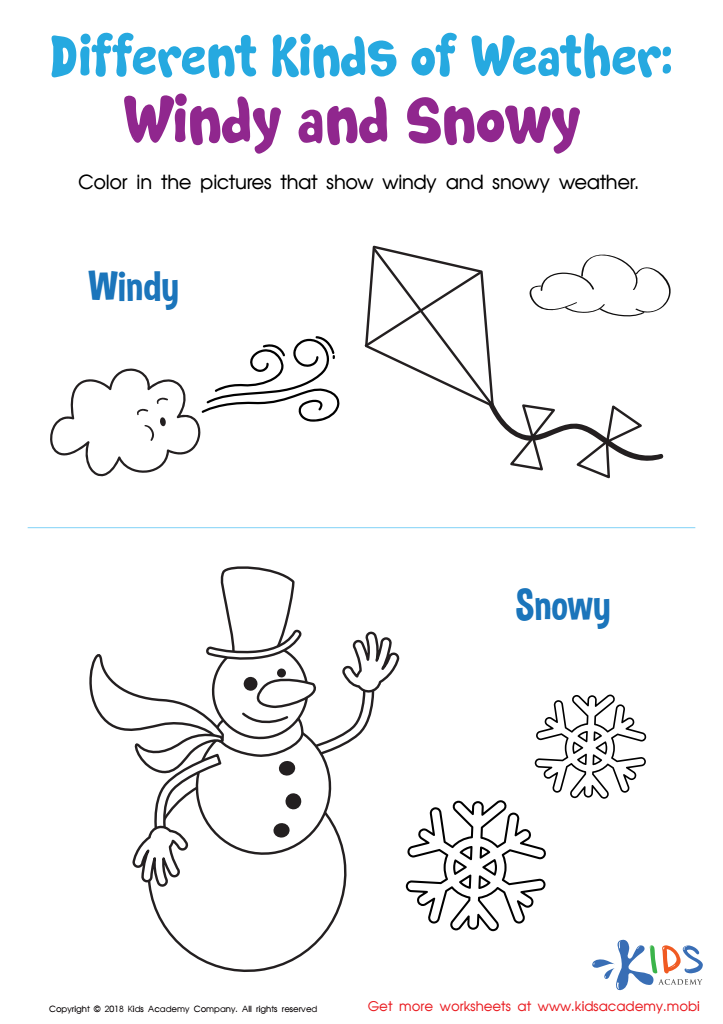

Different Kinds of Weather: Windy and Snowy Worksheet
Understanding normal weather patterns is crucial for children ages 7-9, and parents and teachers should strongly emphasize their importance for several key reasons.
Firstly, knowledge of normal weather helps ensure safety. Younger children often need guidance to dress appropriately and engage in suitable outdoor activities, minimizing risks associated with unexpected weather changes. Parents and teachers who prioritize teaching weather awareness can better protect children from potential harm.
Secondly, early education about weather nurtures scientific curiosity. Children are naturally inquisitive, and weather phenomena can be an exciting gateway to learn about the world around them. Introducing concepts like temperature, precipitation, and wind fosters critical thinking and observational skills, laying a foundation for future scientific endeavors.
Furthermore, routine discussions about weather encourage daily planning and responsibility. By knowing the day’s forecast, children can make informed decisions, developing independence and a sense of preparedness. As they check the weather regularly, they also become aware of seasonal changes and their impact on the environment and lifestyle.
Lastly, understanding weather and its normalcy develops environmental awareness and empathy. Recognizing patterns helps kids appreciate nature’s rhythms and effects on human life, fostering stewardship for the environment from a young age.
By prioritizing education about normal weather, parents and teachers equip children with practical life skills, scientific curiosity, and environmental consciousness.
 Assign to My Students
Assign to My Students








